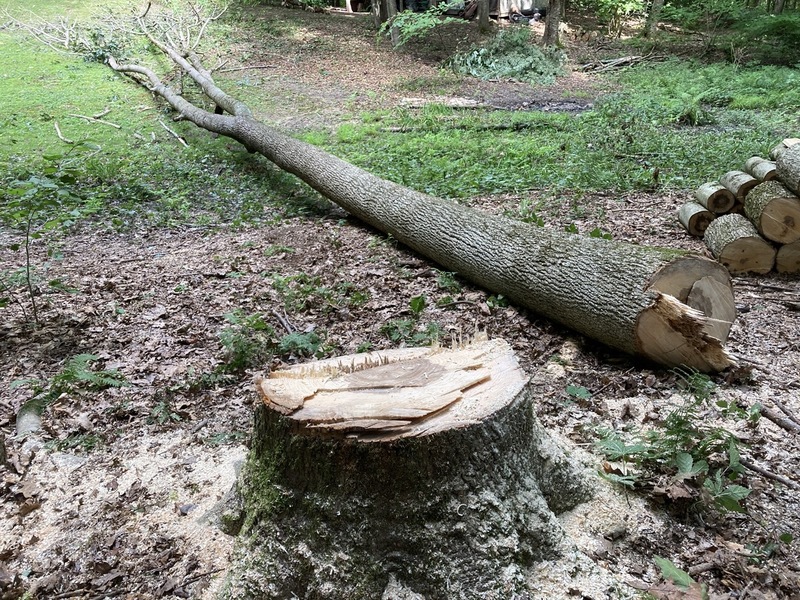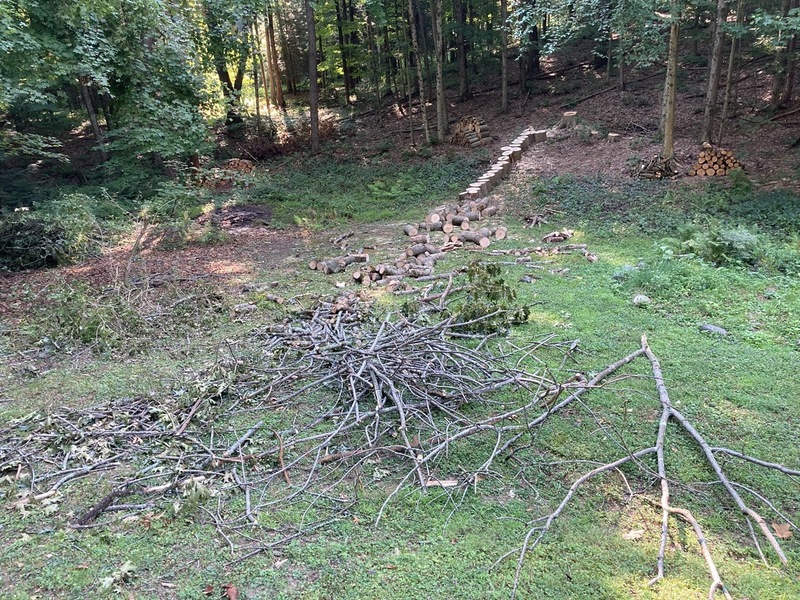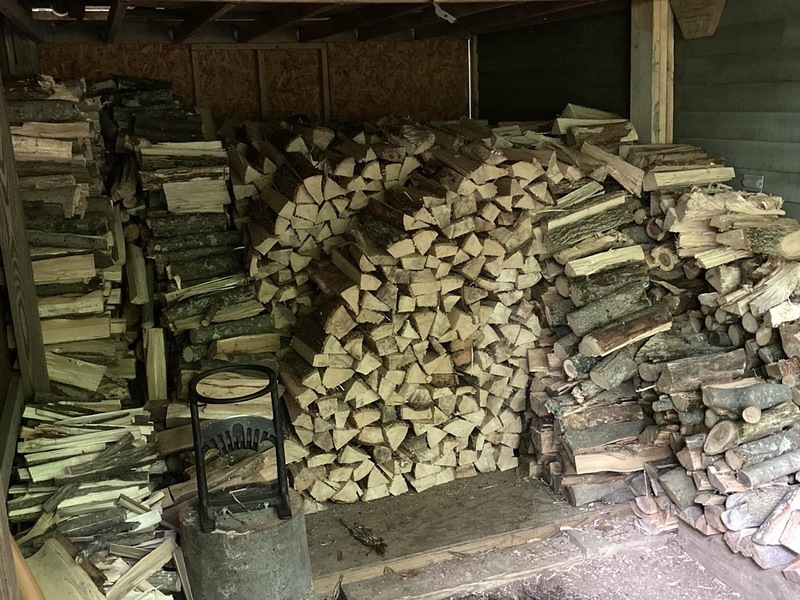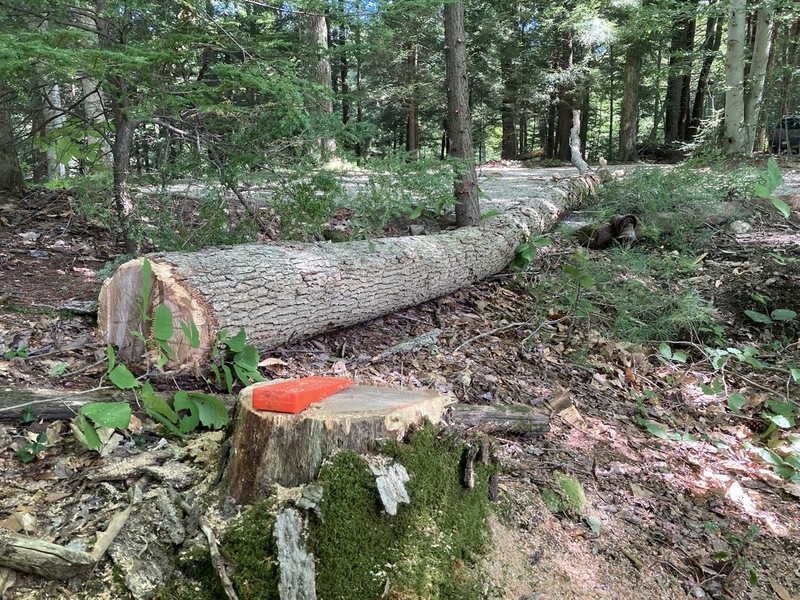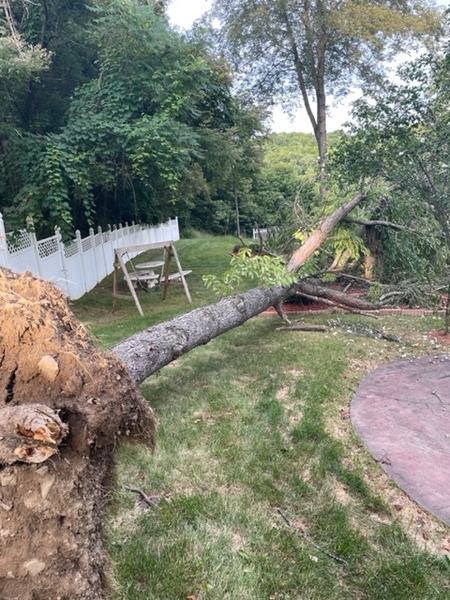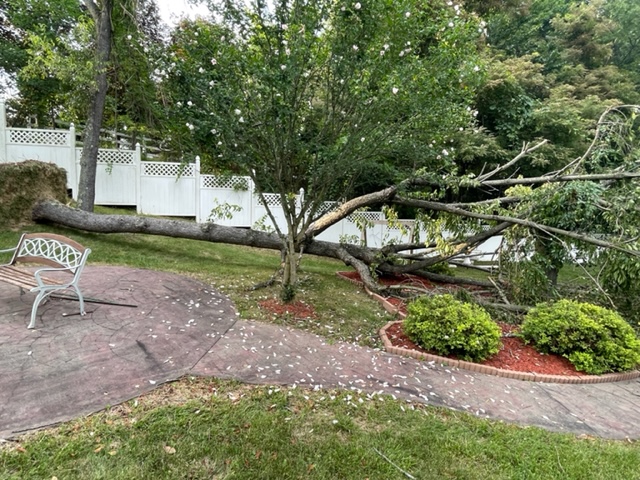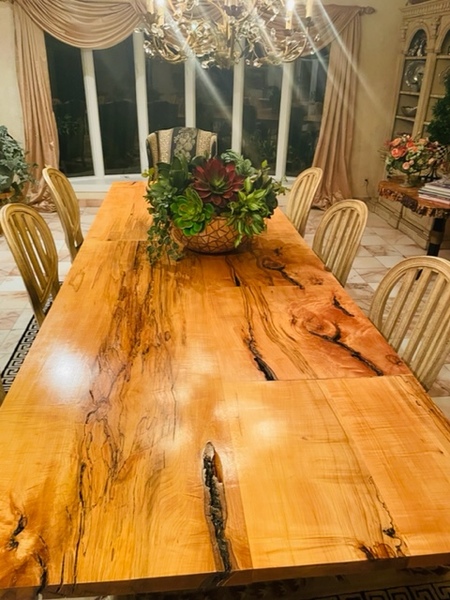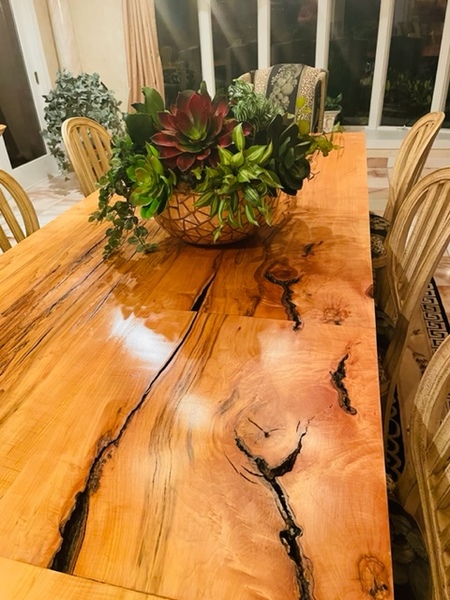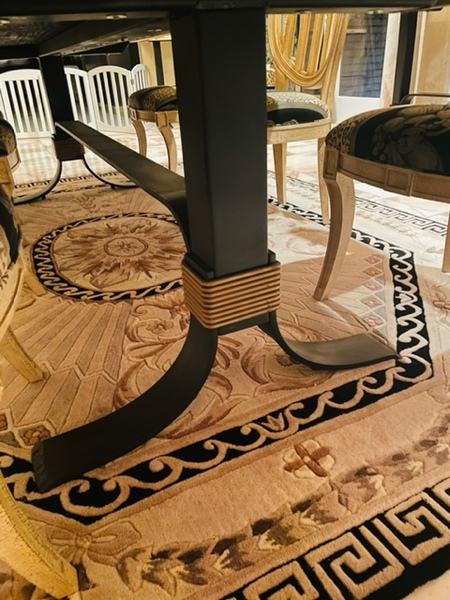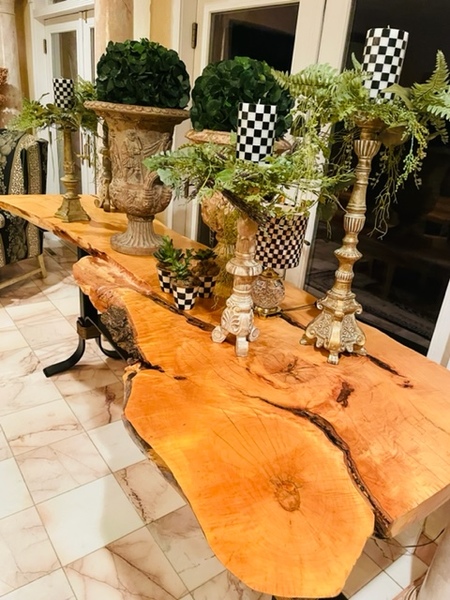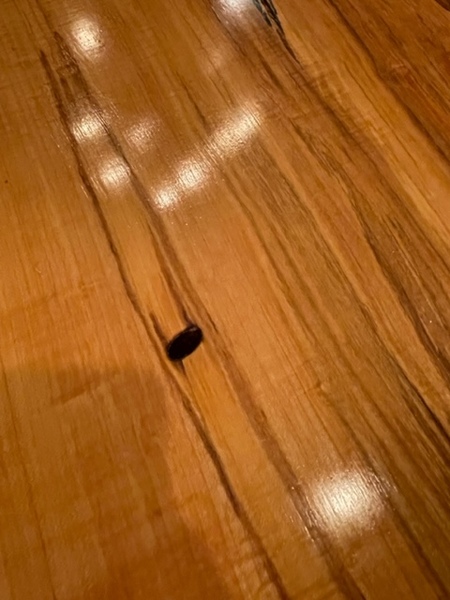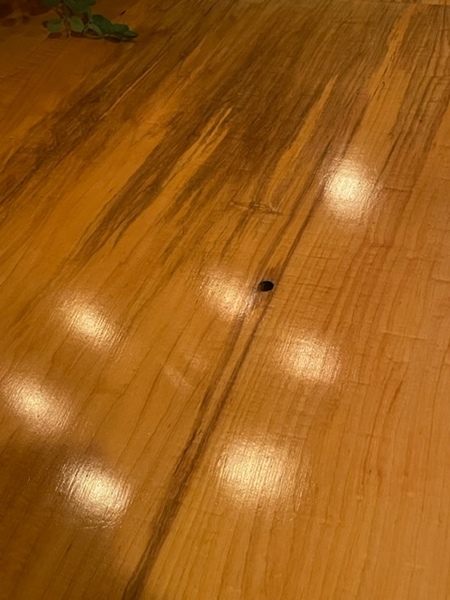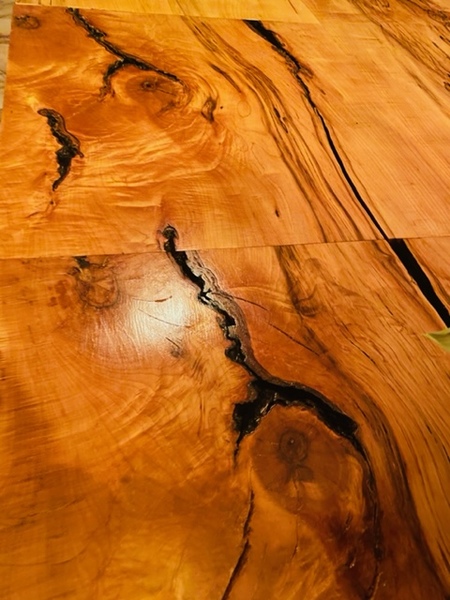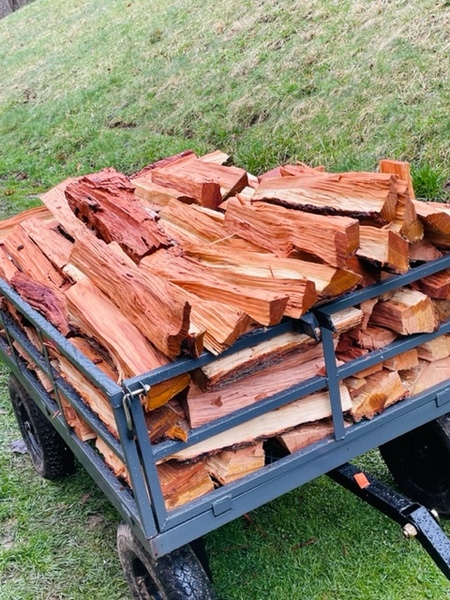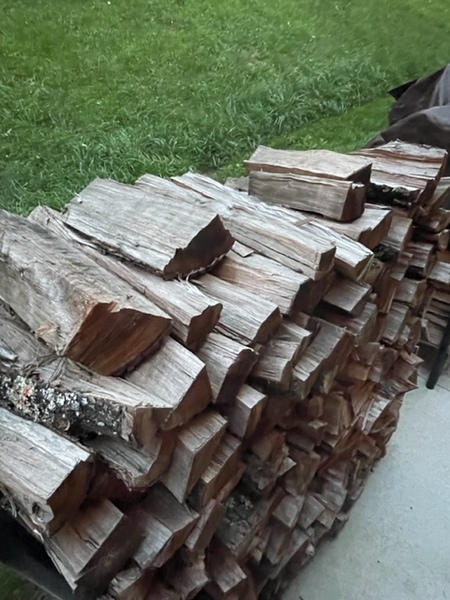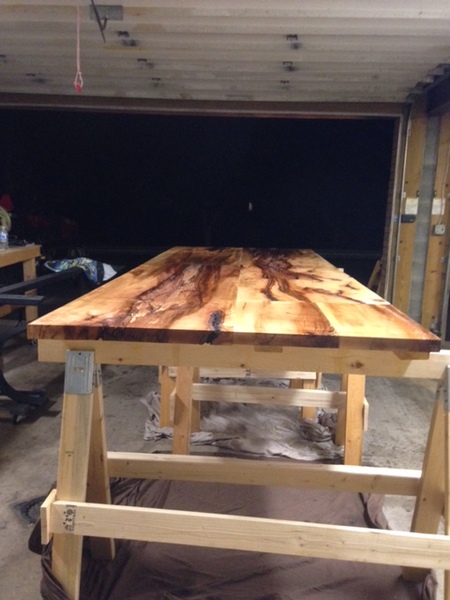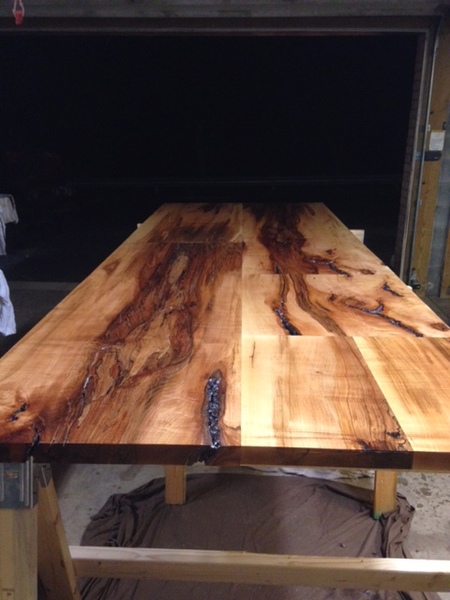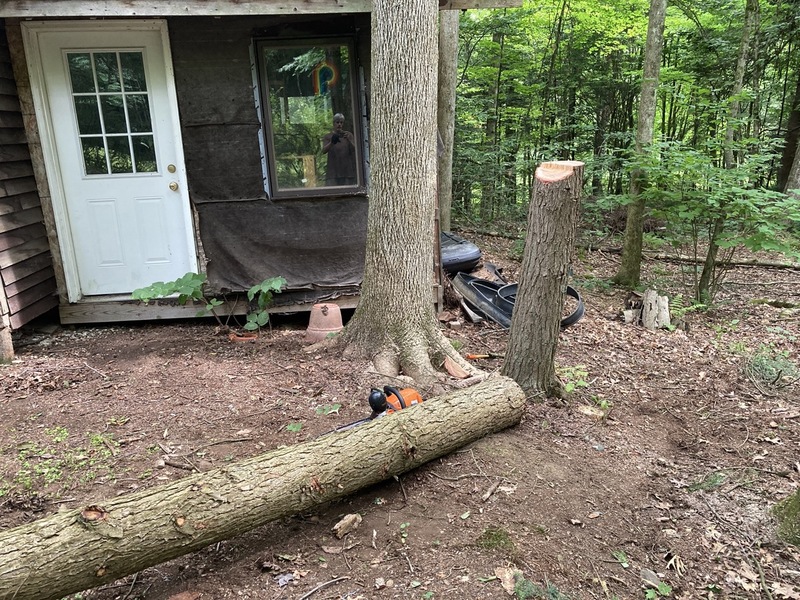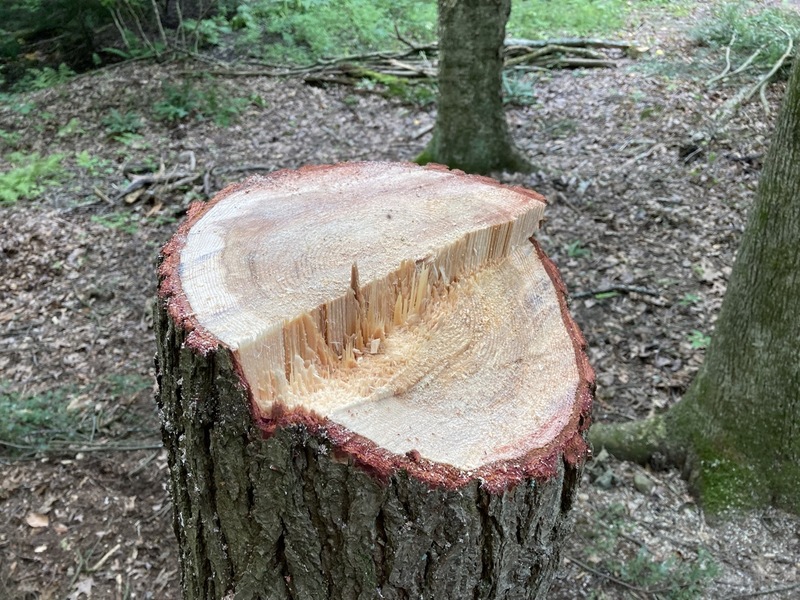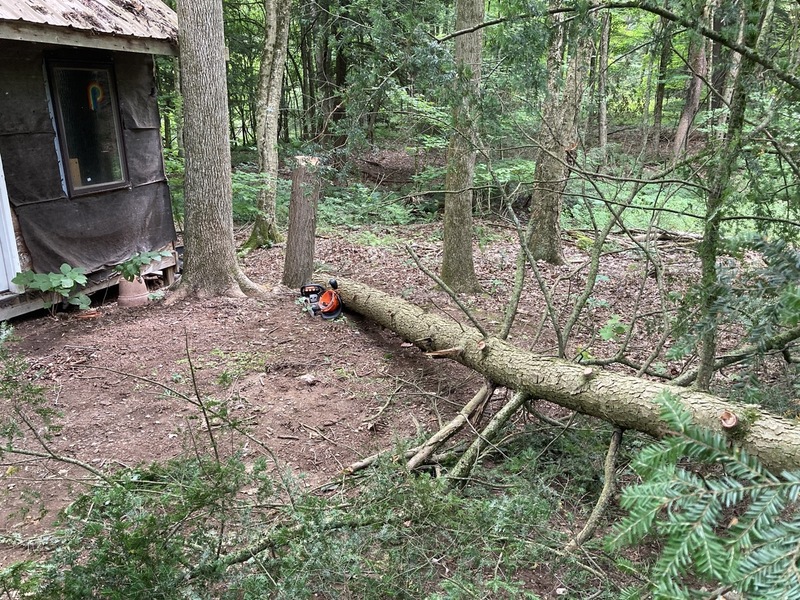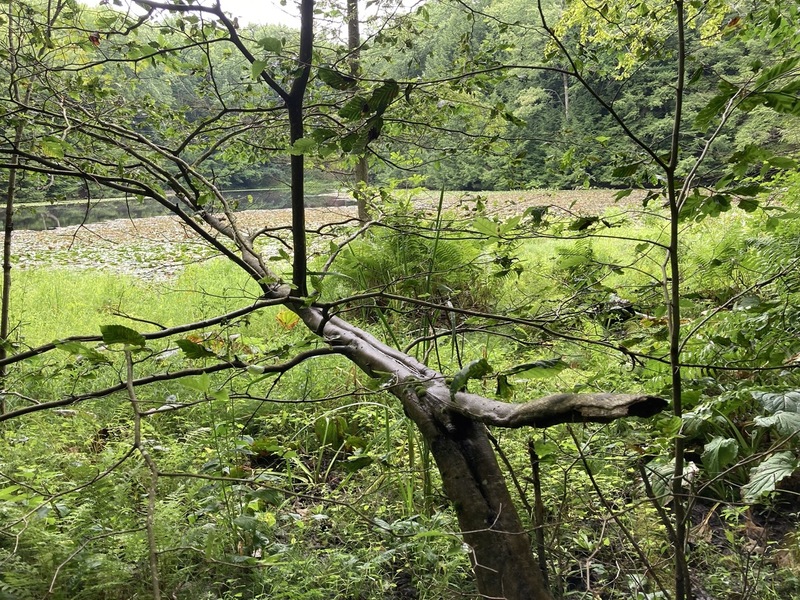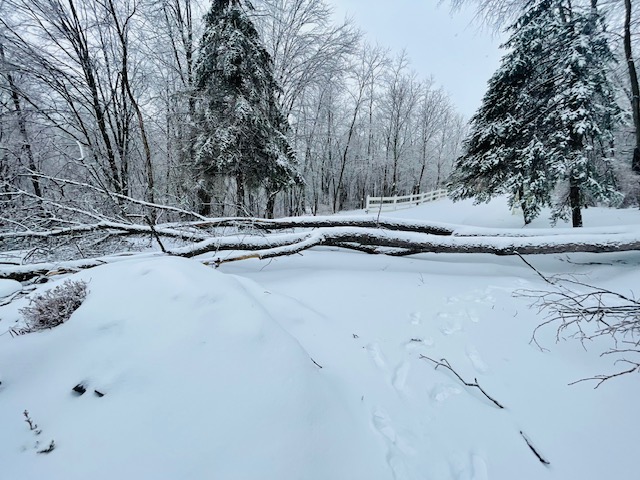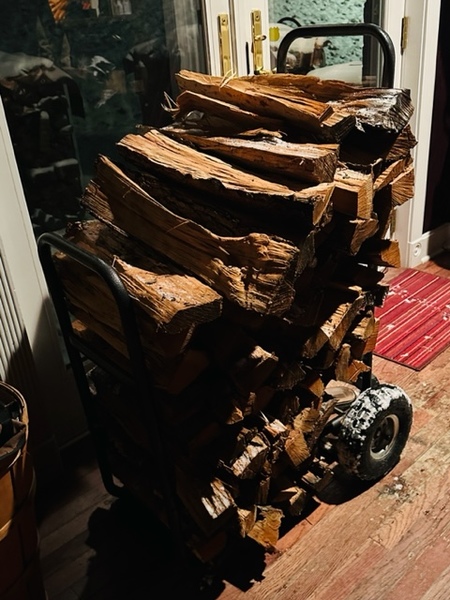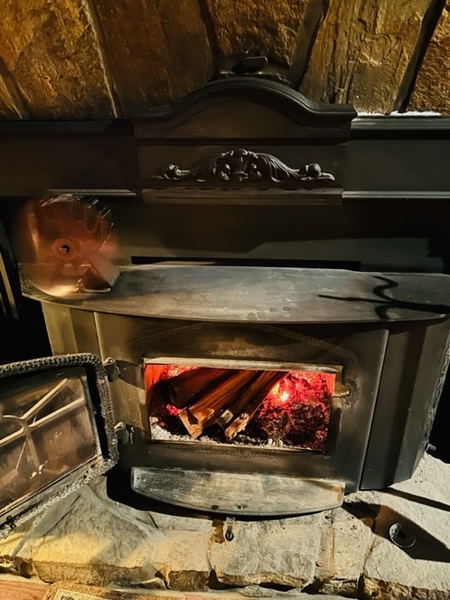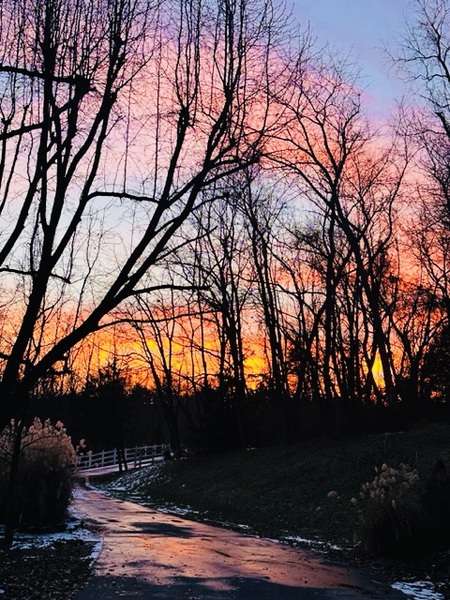Thought I'd add another tree-felling description. I find the process, beyond a lot of work, interesting.
Felled a large (for my experience and saws) 18” dbh (diameter at breast height) 89ft tall White Ash. It was essentially dead, due to Emerald Ash Borer Beetles, with a very few small leaves holding on for dear life at the very top.

All other limbs and branches were dead. It could make for as much as a cord of good firewood and it couldn’t be in a much more convenient location. If all went well it would topple over into my backyard.
Assessing possible hazards:
First, I had to make sure the tall tree would not fall on something important. I estimated the tree’s height (and reach) a couple of ways: The “right angle stick method” that allows one to pace the tree's reach, and a laser rangefinder gave 84ft to an upper limb. After the tree came to ground, the rangefinder gave a complete measurement from branch tips to stump of 89ft.
I could see that, when it fell, the ash could strike some of the outer branches of the 110ft oak leaning out over the yard. If that happened I’d have to keep my eye on any damaged oak branches as I limbed and bucked my fallen tree beneath. Even small oak limbs are dense! When the ash came down the uppermost limbs did indeed strike, and break, some of the outermost limbs of the oak. When a breeze kicked up, I stopped work beneath the oak. Better safe than sorry.
In planning the fall, I judge where gravity would like to take the falling tree by taking into account: dominant lean, mass distribution, and the integrity of the trunk and root mass. This one looked fairly straightforward. The tree had intact roots and stump. The long straight main trunk split into two separate leaders a good 40ft up and they appeared to pretty much balance each other out weight-wise. The tree showed little apparent lean. A straightforward felling it appeared.
Looking out from the tree base, there are other trees that border the yard the falling ash could strike on the way down. Closest was a 12” sugar maple that could even create a potential hanger. Maples are esp prone due to their forked limbs and trunks. It was not worth the risk, so I decided to take that maple down first. It would make for good dense firewood for next season.
Next there was a group of small to mid-sized maples to the right, and a pretty yellow birch on the left, neither of which I wanted the falling ash to damage on its way down. I felt I could drop the ash between both by aiming the face-cut, and trusting to my read on gravity. I had a pretty symmetrical tree and quite a wide target zone to work with. What could go wrong? Multiply whatever it is by the 5000 to 6000lbs such a tree weighs and the gravity of the situation should be sobering. So I aimed my cuts for dead center between the birch and maples, right at an overgrown honeysuckle bush my wife was wanting to remove, or at least prune back. Kill two birds potentially?!
The challenge for me would be making accurate cuts on the 22” stump with my 18” bar. I decided to make the face-cut in two sections, from each side. I first plunge-cut dead center, then carved out two equal wedges, and then cleaned up the apex. Nice!
I scribed the back-cut into the tree’s bark, and then, again, worked in from each side. However, I managed to mismatch the cuts! In trying to fix them I ended up with several deepish slices that pretty much precluded the use of my wedges! The gaps made by the saw kerfs would likely absorb much of the wedges lifting ability.

So, I continued with the back-cut, having to trust to gravity —my read of it— working my way in toward the hinge wood. The kerf opened, slowly, a bit too slowly! And the top of the tree rocked —actually teetered! Oo-boy… So I didn’t dare stay beneath the tree any longer to cut any further. I stepped back and watched as gravity slowly took over and the tree started to go, in the right direction. It hit the ground with a loud crash, bounced surprisingly high into the air, owing to the fact that the length of the tree spanned a dip in the ground. Like a spring the entire tree rebounded a good 6 feet into the air before laying to rest. And it crushed the target honeysuckle. Yes!! And… Phew! The hinge had been left a bit wide, but it worked. Would have been less hairy with a couple of wedges in place.
For bucking, I used four saws: A folding pocket pruner that makes short work of limbs less than 3” diameter or so. In fact, it’s about as fast as a small chainsaw, safer, quieter, and cheaper to run. I also used all three of my chainsaws: A lightweight 2hp MS170 for limbing, and trading off between a 3hp MS251 and a 4hp MS261, allowing each to cool as I worked on the large wood. The 4hp saw was a noticeable help on the main trunk, it scarcely bogging down with the bar fully buried in wood.
Bucking, in general, requires some thought, and knowledge —the recipe for good judgement. One may think the danger is over after the tree crashes to ground. But a felled tree —a broken twisted tangle, much of it under bending stress— is essentially a tangle of massive springs, loaded and waiting to snap straight again, like giant baseball bats. Bucker’s have been surprised, struck, and even killed, by such pent up forces. I worked thoughtfully, from the top of the tree on down the trunk. Even small diameter branches could be dangerous if released against a leg, arm or hand.
Another risk, but more hassle than safety issue, is binding of the saw blade. Mere 1” diameter branches can bind a saw bar tight. Binding on such little branches can be easily dealt with using the folding pruning saw I keep in my back pocket. With larger branches, a second chainsaw may be needed to free the first. As I’ve gained experience, binding happens less, and I only had a couple binds on this tree. Again, pruning saws are darn efficient, and safer than a chainsaw. If the tree is small enough, without a veritable forest of limbing to be done, I’ll opt for the pruner. It’s just safer and really just about as quick as a chainsaw.
I was particularly cautious around the massive twin leaders, lying side by side, that made up the upper half of the tree, attached to the main trunk like a giant tuning fork. The tree had fallen across a shallow dip, suspending the main trunk(s) from each end (why it bounced so high in the air when it fell) creating tension and compression forces pent up in the two massive leaders and much of the main trunk when it came to rest. This created what’s called a “top-bind” across the majority of the tree’s length. That is, the top surface of the trunk and branches are under compression and could pinch and bind the saw bar like a vice as the cutting relieves that compression. I used the top-bind cut sequence (I learned from the British Columbia Feller training video series) where there was space to reach beneath the log and not strike the ground, which can instantly dull the chain. A sharp chain is more important than horsepower. Where the log’s underside was too close to the ground I went to a wedge to keep the kerf from closing on the bar. I also worked the two leaders somewhat alternately, allowing each leader to act as a counterweight to the other, until the pressures were relieved. I just didn't know the pressures they held and how far one might rebound if released improperly.
With each round cut, the top-bind simply continued down the log. The trunk would only be able to fully come to rest, flat on the ground, in the very last 10ft or so of it, when I got across that dip in the ground beneath. This top-bind cutting was getting tedious! So I went to using support logs, stuffed and pounded under the trunk every 8ft or so to suspend the trunk’s cut end, allowing for simple top cuts. I proceeded down the trunk this way, each 125lb round dropping in a nice neat row as I went, until the final stretch of trunk was resting flat on the ground. To keep the massive final stretch of log from potentially rolling over as I lopped rounds off, I used some of the rounds as blocks to keep the log in place.
Are we having fun yet? This is heavy repetitive work, but I find it much more interesting than working out in a gym setting. To spare my back I cut from a kneeling position as much as possible. And I spread the bucking work over a couple of days, and taking breaks to rest and stretch. Stretching helps enormously in relieving, and avoiding, bound muscles. Acetaminophen is helpful too, just before I climb into bed for the night.
When the bucking was complete, I used my truck to haul all but the largest rounds to the woodshed and splitter. My neighbor then came with his tractor and bucket to bring the big rounds in. This 18” dbh 89ft White Ash yielded one full cord by calculation, and at least a full cord by eye in the woodshed. With 3 cords now in the woodshed, I won’t need to do more heavy cutting for the year.
I must say, cutting one’s own firewood is not a terribly cost effective endeavor for a homeowner, compared with the costs of just buying it from a professional outfit. The equipment required, the risks, and the work, are quite an investment. One has to enjoy the work. I enjoy the thinking and the exercise, but will be weighing the cost/benefit as I get older. At some point, large trees will not remain feasible for me alone. That said, with 40acres of mature woodland, there are always problem trees to deal with. Our driveway is a third of a mile long so blowdowns need to be removed from time to time.
This 18” ash aged out at 56 countable rings, down to large seedling size. Apparently, trees have been known to remain at seedling size as long as 20 years, waiting for light to open up in the canopy above. So, sometime in the late 50's to early 60’s, a White Ash seed had whirled down and settled in the woods here, eventually succumbing, before its time, to the Emerald Ash Borer Beetle by 2022, when I felled it for firewood.


